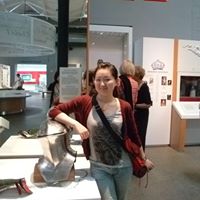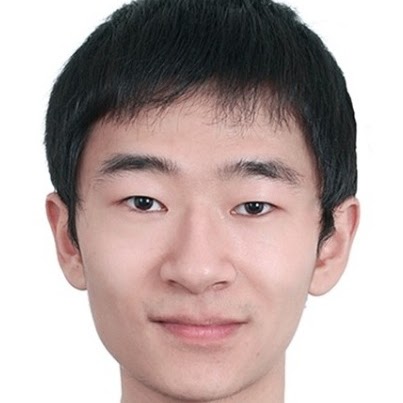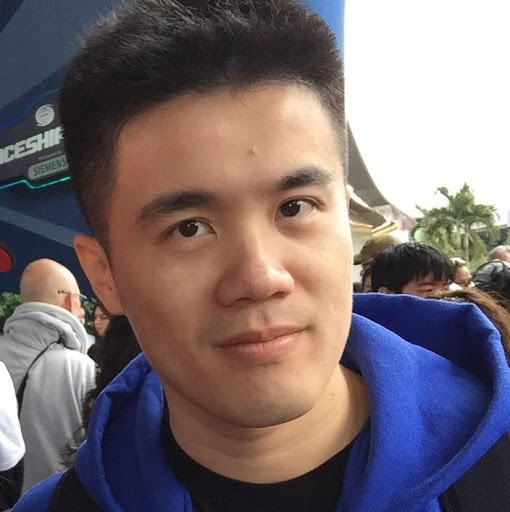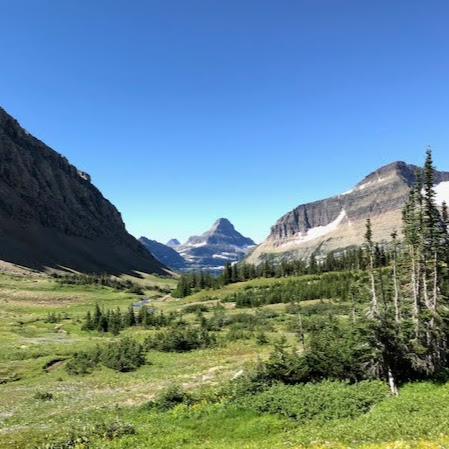Xin Chen
age ~49
from Madison, WI
- Also known as:
-
- Xi N Chen
- Chen Xin
Xin Chen Phones & Addresses
- Madison, WI
- Provo, UT
- Columbia, SC
- Schaumburg, IL
Work
-
Company:The Law Offices of Xin Chen, PC
-
Address:
Education
-
School / High School:Columbia University School of Law
Ranks
-
Licence:New York - Currently registered
-
Date:2002
Specialities
General Practice • International Law • Corporate Law
Isbn (Books And Publications)

Logic of Logistics: Theory, Algorithms, and Applications for Logistics Management
view sourceAuthor
Xin Chen
ISBN #
0387221999

Medicine Doctors

Xin Qian Chen
view sourceSpecialties:
Physical Medicine & Rehabilitation
Work:
Aurora Medical GroupAurora Baycare Medical Center
2845 Greenbrier Rd, Green Bay, WI 54311
(920)2888000 (phone), (920)2885510 (fax)
Bay Care Clinic Physical Medicine
2845 Greenbrier Rd STE 340, Green Bay, WI 54311
(920)2888377 (phone), (920)2888385 (fax)
2845 Greenbrier Rd, Green Bay, WI 54311
(920)2888000 (phone), (920)2885510 (fax)
Bay Care Clinic Physical Medicine
2845 Greenbrier Rd STE 340, Green Bay, WI 54311
(920)2888377 (phone), (920)2888385 (fax)
Education:
Medical School
The Fourth Military Med Univ, Xian City, Shaanxi, China
Graduated: 1984
The Fourth Military Med Univ, Xian City, Shaanxi, China
Graduated: 1984
Procedures:
Physical Medicine and Rehabilitation, Tests and Measurements
Physical Therapy
Physical Therapy Evaluation
Arthrocentesis
Neurological Testing
Physical Therapy
Physical Therapy Evaluation
Arthrocentesis
Neurological Testing
Conditions:
Cholelethiasis or Cholecystitis
Gastrointestinal Hemorrhage
Inguinal Hernia
Malignant Neoplasm of Esophagus
Varicose Veins
Gastrointestinal Hemorrhage
Inguinal Hernia
Malignant Neoplasm of Esophagus
Varicose Veins
Languages:
Chinese
English
French
Spanish
English
French
Spanish
Description:
Dr. Chen graduated from the The Fourth Military Med Univ, Xian City, Shaanxi, China in 1984. He works in Green Bay, WI and 1 other location and specializes in Physical Medicine & Rehabilitation. Dr. Chen is affiliated with Aurora Baycare Medical Center.

Xin Chen
view sourceSpecialties:
Pediatrics
Work:
TJH Medical Services PCTJH Medical Services
9229 Queens Blvd STE C1, Rego Park, NY 11374
(718)5751992 (phone), (917)8326697 (fax)
9229 Queens Blvd STE C1, Rego Park, NY 11374
(718)5751992 (phone), (917)8326697 (fax)
Education:
Medical School
Peking Union Med Coll, Beijing, Beijing, China
Graduated: 1993
Peking Union Med Coll, Beijing, Beijing, China
Graduated: 1993
Conditions:
Acute Bronchitis
Acute Conjunctivitis
Acute Pharyngitis
Acute Sinusitis
Acute Upper Respiratory Tract Infections
Acute Conjunctivitis
Acute Pharyngitis
Acute Sinusitis
Acute Upper Respiratory Tract Infections
Languages:
Chinese
English
Spanish
English
Spanish
Description:
Dr. Chen graduated from the Peking Union Med Coll, Beijing, Beijing, China in 1993. She works in Rego Park, NY and specializes in Pediatrics. Dr. Chen is affiliated with Flushing Hospital Medical Center and Jamaica Hospital Medical Center.
Name / Title
Company / Classification
Phones & Addresses
President
Chen's King Wok, Inc
Eating Place · Full-Service Restaurants
Eating Place · Full-Service Restaurants
6100 NW Hwy, Bull Valley, IL 60014
(815)3568899, (815)3568912
(815)3568899, (815)3568912
Principal
Microcera LLC
Business Services at Non-Commercial Site
Business Services at Non-Commercial Site
20678 N Laurel Dr, Hoffman Estates, IL 60010
Director, President, Secretary, Treasurer
Flm Minerals Inc
SANHE INC
UM CONSULTING CLEVELAND, INC
OCEAN GARDEN BUFFET TOLEDO INC
NEW OCEAN GARDEN BUFFET INC
Owner
Sun Shui Fine Chinese & Sushi
Eating Place
Eating Place
155 W Rand Rd, Arlington Heights, IL 60004
(847)8708888
(847)8708888
Us Patents
-
Composite Body Of Silicon Carbide And Binderless Carbon, Process For Producing Such Composite Body, And Article Of Manufacturing Utilizing Such Composite Body For Tribological Applications
view source -
US Patent:6716800, Apr 6, 2004
-
Filed:Apr 12, 2002
-
Appl. No.:10/122293
-
Inventors:Joseph F. Demendi - Crystal Lake IL
Xin Chen - Crystal Lake IL
William R. Clemens - Carpentersville IL -
Assignee:John Crane Inc. - Morton Grove IL
-
International Classification:C10M10300
-
US Classification:508107, 508109, 501 88, 501 89, 501 90, 501 99, 428408, 428446, 428698, 264 291, 264682
-
Abstract:A composite body of silicon carbide having binderless, allotropic carbon granules distributed throughout is produced. The nominal size of the binderless allotropic carbon granules can range from 5 to 500 micrometers. The concentration of the binderless allotropic carbon particles can vary from 1. 0 to 35. 0 weight percent. The process to produce such a composite body is to sinter silicon carbide with binderless, carbon-yielding precursor granules. The composite body is utilized in tribological applications. The dense, impervious silicon carbide-binderless carbon composite exhibits excellent physical and tribological characteristics when used as a mechanical face seal, a sliding bearing arrangement, or some other rubbing component.
-
Ceramic Composite Body Of Silicon Carbide/Boron Nitride/Carbon
view source -
US Patent:7166550, Jan 23, 2007
-
Filed:Jan 7, 2005
-
Appl. No.:11/031475
-
Inventors:Xin Chen - Deer Park IL, US
-
International Classification:C04B 35/577
C04B 35/5833 -
US Classification:501 90, 501 92, 501 964
-
Abstract:A ceramic composite body comprising sintered silicon carbide as major phase, dispersed boron nitride/carbon granules as minor phase, and the boron nitride/carbon granules comprise hexagonal phase boron nitride powders bonded together by glassy carbon. The composite body contains at least 3 weight percent of boron nitride, the average size of the boron nitride granules is greater than 10 micrometers, and the shape of majority of the granules is irregular. The composite body of high boron nitride loading can be further processed to improve mechanical and thermal properties by filling the porosity with glassy carbon, obtained from carbonizing glassy carbon precursor. The composite material exhibits superior thermal and tribological characteristics than monolithic silicon carbide.
-
System And Method For Revealing Occluded Objects In An Image Dataset
view source -
US Patent:8086071, Dec 27, 2011
-
Filed:Oct 30, 2007
-
Appl. No.:11/980033
-
Inventors:Xin Chen - Evanston IL, US
William Gale - Oak Park IL, US -
Assignee:NAVTEQ North America, LLC - Chicago IL
-
International Classification:G06K 9/36
G06K 9/00
G06T 15/40
G06G 5/13 -
US Classification:382284, 382154, 382103, 345629, 345421
-
Abstract:Disclosed are a system and method for identifying objects in an image dataset that occlude other objects and for transforming the image dataset to reveal the occluded objects. In some cases, occluding objects are identified by processing the image dataset to determine the relative positions of visual objects. Occluded objects are then revealed by removing the occluding objects from the image dataset or by otherwise de-emphasizing the occluding objects so that the occluded objects are seen behind it. A visual object may be removed simply because it occludes another object, because of privacy concerns, or because it is transient. When an object is removed or de-emphasized, the objects that were behind it may need to be “cleaned up” so that they show up well. To do this, information from multiple images can be processed using interpolation techniques. The image dataset can be further transformed by adding objects to the images.
-
Lithium/Carbon Monofluoride Batteries With Organosilicon Electrolytes
view source -
US Patent:8486569, Jul 16, 2013
-
Filed:May 10, 2010
-
Appl. No.:12/776922
-
Inventors:Monica L. Usrey - Madison WI, US
Xin Chen - Madison WI, US
Jose A. Pena Hueso - Madison WI, US
Robert C. West - Madison WI, US
Robert J. Hamers - Madison WI, US -
Assignee:Wisconsin Alumni Research Foundation - Madison WI
-
International Classification:H01M 6/16
-
US Classification:429324, 42923195, 429326
-
Abstract:Disclosed are lithium/carbon monofluoride batteries suitable for long term use at highly elevated temperatures. Organosilicon electrolytes having low vapor pressure and high flash points are used, along with lithium salts and ceramic separators. Methods of using these batteries at high temperatures are also disclosed.
-
Determining Travel Path Features Based On Retroreflectivity
view source -
US Patent:20100217529, Aug 26, 2010
-
Filed:Feb 20, 2009
-
Appl. No.:12/389553
-
Inventors:Matei Nicolai Stroila - Chicago IL, US
Xin Chen - Evanston IL, US
Mahsa Kamali Moghaddam - Champaign IL, US
Victor Lu - Urbana IL, US
Bradley Dean Kohlmeyer - Lisle IL, US -
International Classification:G06F 19/00
G01S 1/00
G01C 3/06 -
US Classification:702 5, 34235706, 356 401
-
Abstract:Systems, devices, features, and methods for determining geographic features corresponding to a travel path to develop a map database, such as a navigation database, are disclosed. For example, one method comprises emitting light from a light source, such as a LIDAR device, while on the travel path. Returning light is received based on the emitted light. The returning light is used to generate data points representing an area about the travel path. The data points are filtered as a function of a return intensity value to identify a feature associated with the travel path, in which the feature is treated with a retroreflective substance.
-
Determining Geographic Position Information From A Single Image
view source -
US Patent:20100321489, Dec 23, 2010
-
Filed:Jun 23, 2009
-
Appl. No.:12/489737
-
Inventors:Xin Chen - Evanston IL, US
Xiangheng Yang - Glenview IL, US
Roger B. Hui - Northbrook IL, US
Narayanan Alwar - South Barrington IL, US -
International Classification:H04N 7/18
-
US Classification:348116, 348E07085
-
Abstract:Systems, devices, features, and methods for determining geographic position information from an image are disclosed. For example, one method for determining the geographic position information is used to develop a navigation database. The method comprises capturing a plurality of images of geographic features by a camera mounted on a vehicle or a pedestrian. A single image from the plurality of images is identified or selected. A real-world ground distance between a reference ground point in the single image and a ground point corresponding to an object in the single image is determined based on determined calibration values corresponding to the camera. Real-world geographic position information, such as a latitude coordinate and a longitude coordinate, of the ground point corresponding to the object in the single image is determined based on the determined real-world ground distance.
-
Determining A Geometric Parameter From A Single Image
view source -
US Patent:20100321490, Dec 23, 2010
-
Filed:Jun 23, 2009
-
Appl. No.:12/489697
-
Inventors:Xin Chen - Evanston IL, US
Roger B. Hui - Northbrook IL, US
Narayanan Alwar - South Barrington IL, US -
International Classification:H04N 7/18
-
US Classification:348118, 348E07085
-
Abstract:Systems, devices, features, and methods for determining a geometric parameter from an image are disclosed. For example, one method for determining the geometric parameter is used to develop a navigation database. The method comprises determining calibration values corresponding to a camera mounted on a vehicle or a pedestrian. A plurality of images of geographic features are captured by the camera. A single image from the plurality of images is identified or selected. A geometric parameter of a region in the single image is determined based on the determined calibration values. For example, the geometric parameter is a real-world distance, such as a real-world length or width.
-
Detecting Common Geographic Features In Images Based On Invariant Components
view source -
US Patent:20100328462, Dec 30, 2010
-
Filed:Jun 24, 2009
-
Appl. No.:12/490575
-
Inventors:Xin Chen - Evanston IL, US
-
International Classification:H04N 7/18
G06K 9/00
G06F 17/30 -
US Classification:348148, 382104, 348E07085, 707802, 707803
-
Abstract:Systems, devices, features, and methods for detecting common geographic features in images, such as, for example, to develop a navigation database are disclosed. For example, a method of detecting a common text pattern, such as for a road or path sign, from collected images includes collecting a plurality of images of geographic areas along a road or path. An image of the plurality of images is selected. Components that correspond to an object about the road or path in the selected image are determined. In one embodiment, the determined components are independent or invariant to scale of the object. The determined components are compared to reference components in a data library. If the determined components substantially match the reference components, the object in the selected image is identified to be a common pattern, such as for a standard road or path sign, corresponding to the reference components in the data library.
Resumes

Xin Chen Chicago, IL
view sourceWork:
GeoInformatica
2015 to 2000
Guest Editor, Special Issue on Computational Transportation Science Adjunct Assistant Professor
Sep 2012 to 2000 Adjunct Professor and Ph.D. Advisor
Aug 2010 to 2000 HERE, a NOKIA
Jun 2006 to 2000
Senior Research Scientist, Engineering Manager, University Cooperation Ambassador ACM SIGSPATIAL GIS Cup
2014 to 2015
Contest Chair International Workshop on Computational Transportation Science
2014 to 2014
Workshop Chair ACM SIGSPATIAL GIS Cup
2014 to 2014
Local Chair, IEEE International Conference Seminar at Robotics group
London
2014 to 2014 Junzhou Huang
Arlington, TX
2014 to 2014 Junzhou Huang
Arlington, TX
2014 to 2014
per deliverable from Nokia and lead a research collaboration Junzhou Huang
2014 to 2014 Junzhou Huang
2014 to 2014 NIST Forensic Science Center of Excellence Program
2014 to 2014 Heterogeneous Sensors
2014 to 2014 wide top awards for Hack Week competition
2013 to 2014 IPRO
2013 to 2013
IPRO course development ACM SIGSPATIAL International Conference on Advances in GIS
2012 to 2013
Publicity Chair HERE, a NOKIA
2012 to 2012
Corporate Relations Chair, IEEE International Conference on Computer Vision and Pattern Recognition Northern Illinois University
2012 to 2012 Argonne National Lab
2012 to 2012 Northwestern University
2012 to 2012 IPRO
2012 to 2012
IPRO course development ACM SIGSPATIAL International Conference on Advances in GIS
2011 to 2011
Local Chair 3D Imaging Modeling Processing Visualization and Transmission
2011 to 2011
Publicity Chair Illinois Institute of Technology
2011 to 2011 California at Los Angeles
Los Angeles, CA
2011 to 2011 Notre Dame
2011 to 2011 HERE, a NOKIA
2010 to 2011 ACM Multimedia
2010 to 2010
Technical Program Chair ACM SIGMM International Conference on Multimedia Information
2010 to 2010
Industrial & Demo Program Chair Seminar at Information Sciences and Technology College
2010 to 2010 Talk at Midwest University Industry Summit, Purdue University
2010 to 2010 Purdue University
2010 to 2010 Seminar at Computational Transportation Science Program, University of Illinois
Chicago, IL
2010 to 2010 California at Los Angeles
Los Angeles, CA
2010 to 2010 Dynasty Group, Inc
2010 to 2010 U. of Notre Dame
2010 to 2010 University of Notre Dame
2009 to 2009 Seminar at Robotics Institute
2009 to 2009 Columbia University
2009 to 2009 University of Wisconsin
Madison, WI
2009 to 2009 Seminar at Beckman Institute
Urbana, IL
2009 to 2009 Engineering and Applied Science, Northwestern University
2009 to 2009 Indiana University Purdue University
2009 to 2009 U. of Notre Dame
2009 to 2009 Notre Dame
2008 to 2008 University of Notre Dame
Notre Dame, IN
Aug 2001 to Jun 2006
Research Assistant Equinox Corporation
Baltimore, MD
May 2005 to Sep 2005
Research Intern
2015 to 2000
Guest Editor, Special Issue on Computational Transportation Science Adjunct Assistant Professor
Sep 2012 to 2000 Adjunct Professor and Ph.D. Advisor
Aug 2010 to 2000 HERE, a NOKIA
Jun 2006 to 2000
Senior Research Scientist, Engineering Manager, University Cooperation Ambassador ACM SIGSPATIAL GIS Cup
2014 to 2015
Contest Chair International Workshop on Computational Transportation Science
2014 to 2014
Workshop Chair ACM SIGSPATIAL GIS Cup
2014 to 2014
Local Chair, IEEE International Conference Seminar at Robotics group
London
2014 to 2014 Junzhou Huang
Arlington, TX
2014 to 2014 Junzhou Huang
Arlington, TX
2014 to 2014
per deliverable from Nokia and lead a research collaboration Junzhou Huang
2014 to 2014 Junzhou Huang
2014 to 2014 NIST Forensic Science Center of Excellence Program
2014 to 2014 Heterogeneous Sensors
2014 to 2014 wide top awards for Hack Week competition
2013 to 2014 IPRO
2013 to 2013
IPRO course development ACM SIGSPATIAL International Conference on Advances in GIS
2012 to 2013
Publicity Chair HERE, a NOKIA
2012 to 2012
Corporate Relations Chair, IEEE International Conference on Computer Vision and Pattern Recognition Northern Illinois University
2012 to 2012 Argonne National Lab
2012 to 2012 Northwestern University
2012 to 2012 IPRO
2012 to 2012
IPRO course development ACM SIGSPATIAL International Conference on Advances in GIS
2011 to 2011
Local Chair 3D Imaging Modeling Processing Visualization and Transmission
2011 to 2011
Publicity Chair Illinois Institute of Technology
2011 to 2011 California at Los Angeles
Los Angeles, CA
2011 to 2011 Notre Dame
2011 to 2011 HERE, a NOKIA
2010 to 2011 ACM Multimedia
2010 to 2010
Technical Program Chair ACM SIGMM International Conference on Multimedia Information
2010 to 2010
Industrial & Demo Program Chair Seminar at Information Sciences and Technology College
2010 to 2010 Talk at Midwest University Industry Summit, Purdue University
2010 to 2010 Purdue University
2010 to 2010 Seminar at Computational Transportation Science Program, University of Illinois
Chicago, IL
2010 to 2010 California at Los Angeles
Los Angeles, CA
2010 to 2010 Dynasty Group, Inc
2010 to 2010 U. of Notre Dame
2010 to 2010 University of Notre Dame
2009 to 2009 Seminar at Robotics Institute
2009 to 2009 Columbia University
2009 to 2009 University of Wisconsin
Madison, WI
2009 to 2009 Seminar at Beckman Institute
Urbana, IL
2009 to 2009 Engineering and Applied Science, Northwestern University
2009 to 2009 Indiana University Purdue University
2009 to 2009 U. of Notre Dame
2009 to 2009 Notre Dame
2008 to 2008 University of Notre Dame
Notre Dame, IN
Aug 2001 to Jun 2006
Research Assistant Equinox Corporation
Baltimore, MD
May 2005 to Sep 2005
Research Intern
Education:
University of Notre Dame
Notre Dame, IN
May 2006
Ph.D. in Computer Science and Engineering University of Science and Technology of China
May 2003
M.S. in Computer Science and Engineering
Notre Dame, IN
May 2006
Ph.D. in Computer Science and Engineering University of Science and Technology of China
May 2003
M.S. in Computer Science and Engineering

Xin Chen Madison, WI
view sourceWork:
Complete Phytochemical Solutions LLC
2013 to 2000
Researcher University of Wisconsin-Madison
Madison, WI
2011 to 2013 Brigham Young University
2006 to 2011
2013 to 2000
Researcher University of Wisconsin-Madison
Madison, WI
2011 to 2013 Brigham Young University
2006 to 2011
Education:
Brigham Young University
2006 to 2011
Ph.D. of Analytical Chemistry Nanjing University
Nanjing, CN
1999 to 2002
Master of Physical Chemistry Nanjing University
Nanjing, CN
1994 to 1998
Bachelor of Science in Chemistry
2006 to 2011
Ph.D. of Analytical Chemistry Nanjing University
Nanjing, CN
1999 to 2002
Master of Physical Chemistry Nanjing University
Nanjing, CN
1994 to 1998
Bachelor of Science in Chemistry

Xin Chen Madison, WI
view sourceWork:
Post-doctoral Research
Mar 2011 to 2000
Research Associate Brigham Young University
Jan 2006 to Jan 2011
Research Assistant Zhenjiang Development & Reform Commission
Zhenjiang, CN
2002 to 2005
Civil Engineer Nanjing University
Nanjing, CN
Sep 1999 to Jun 2002
Research Assistant
Mar 2011 to 2000
Research Associate Brigham Young University
Jan 2006 to Jan 2011
Research Assistant Zhenjiang Development & Reform Commission
Zhenjiang, CN
2002 to 2005
Civil Engineer Nanjing University
Nanjing, CN
Sep 1999 to Jun 2002
Research Assistant
Education:
Brigham Young University
2006 to 2011
Ph.D. of Analytical Chemistry Nanjing University
Nanjing, CN
1999 to 2002
Master of Physical Chemistry Nanjing University
Nanjing, CN
1994 to 1998
Bachelor of Science in Chemistry
2006 to 2011
Ph.D. of Analytical Chemistry Nanjing University
Nanjing, CN
1999 to 2002
Master of Physical Chemistry Nanjing University
Nanjing, CN
1994 to 1998
Bachelor of Science in Chemistry
Skills:
U/HPLC/MS/MS
Lawyers & Attorneys

Xin Chen - Lawyer
view sourceAddress:
Shearman & Sterling
(297)88001xx (Office)
(297)88001xx (Office)
Licenses:
New York - Currently registered 2002
Education:
Columbia University School of Law

Xin Chen - Lawyer
view sourceOffice:
The Law Offices of Xin Chen, PC
Specialties:
General Practice
International Law
Corporate Law
International Law
Corporate Law
ISLN:
915020056
Admitted:
2003
Law School:
College of William and Mary, LL.M., 1995; Indiana University-Indianapolis, J.D., 2002; Peking University, LL.B., 1982
Plaxo

chen xin
view source
Xin Chen
view sourceSanta Clara, CA

Xin Chen
view sourceSinoprogress

Chen Xin
view sourcePast: VITM at Atos Origin

Xin Yao Chen
view source
Xin Wei Chen
view source
Xin Yi Chen
view source
Xin Lei Chen
view source
Xin Sophie Chen
view source
Xin Xin Chen
view source
Xin Yao Chen
view source
Xin Ying Chen
view sourceYoutube
Classmates

Xin Chen
view sourceSchools:
Shenyang Yucai School High School Shenyang China 1990-1994
Community:
Teresa Schnell, Glen Robinson

Xin Chen
view sourceSchools:
purdue univers West Lafayette IN 2000-2002
Community:
Lamar Jones, Brecke Kelley, Terri Malone

Xin Chen
view sourceSchools:
Xiangmin High School Shanghai China 1982-1986
Community:
Glenda Case, Raazia Bokhari

Xin Chen
view sourceSchools:
Montauk Elementary School Montauk NY 1999-2003
Community:
Gerald Clark, Debbie Morici

Xin Chen
view sourceSchools:
Ft. Worth Country Day Ft. Worth TX 1999-2003
Community:
Tiffany Marable, Heather Davis

Xin Chen
view sourceSchools:
Edward B. Shallow Junior High School 227 Brooklyn NY 1999-2003
Community:
Carol Iannone, Lucille Epifania, Carole Martino

Jian-Xin Chen, El Monte H...
view source
Xin Chen | Edinboro Unive...
view sourceNews

Graphene Oxide: Nano-Warrior Reduces the Toxicity of Alzheimer's Proteins
view source- The next step is to investigate whether it is possible to develop a drug delivery system based on graphene oxide for Alzheimers disease, says Xin Chen. We also want to test whether graphene oxide has beneficial effects in additional models of neurodegenerative diseases, such as Parkinsons diseaReference: Graphene Oxide Attenuates Toxicity of Amyloid- Aggregates in Yeast by Promoting Disassembly and Boosting Cellular Stress Response by Xin Chen, Santosh Pandit, Lei Shi, Vaishnavi Ravikumar, Julie Bonne Khler, Ema Svetlicic, Zhejian Cao, Abhroop Garg, Dina Petranovic and Ivan Mijakovic,
- Date: Oct 04, 2023
- Category: Health
- Source: Google

Cells Get a Makeover, Cancer Follows: A Path to New Therapies or Warning to ...
view source- In this case, two young scientists, Holger Willenbring and Xin Chen, were trying to study a deadly, and fairly common, form of liver cancer called hepatocellular carcinoma. Chen and her group hoped to induce the cancer by activating oncogenes, genes that trigger cancer, in a group of liver cells cal
- Date: Jul 18, 2012
- Category: Health
- Source: Google

Jellyfish-Inspired Robot Runs on Hydrogen
view source- Although the components have each been reported before, "It is probably one of the first and best demonstrations of a combination of nanotechology, hydrogen-fuel technology and soft robotics," said Xin Chen of Boston University who was not a part of the study.
- Date: Mar 21, 2012
- Category: Sci/Tech
- Source: Google
Myspace
Flickr
Googleplus

Xin Chen
Work:
Bloomberg L.P. - Financial Software Developer (6)
FX Aliance LLC - Software Developer Intern (1-4)
Coverago LLC - Software Engineer Intern (4-7)
FX Aliance LLC - Software Developer Intern (1-4)
Coverago LLC - Software Engineer Intern (4-7)
Education:
Columbia University - Computer Science, Zhejiang University - Information Science and Engineering

Xin Chen
Work:
Terminator skynet - Eliminator (2090-3015)
Skynet
Skynet
Education:
Sint-montfortcollege
Tagline:
I'm the chinese eliminator

Xin Chen
Work:
TrendSource - Marketing Associate (2011)
Education:
San Diego State University - Marketing, Grossmont College - Business Administration
Tagline:
Dream Flighter!

Xin Chen
Lived:
Libertyville, IL
Work:
Motorola Mobility Holdings, Inc.
Education:
Tianjin University

Xin Chen
Education:
Duke University - Master of Economics, Miami University - Business Economics
About:
Disciple of Love and Beauty.Defender of Rationality and Humanity.

Xin Chen
Work:
COMODO - QA Engineer (2009)
Education:
Beijing Jiaotong University - Electromagnetic Compatibility, Beijing Jiaotong University - Optics

Xin Chen
Lived:
Madison, WI
Work:
University of Wisconsin Press - Graduate student
Education:
University of Wisconsin-Madison

Xin Chen
Education:
Pennsylvania State University - CSE, Nanjing University - CS, None
Get Report for Xin Chen from Madison, WI, age ~49
















